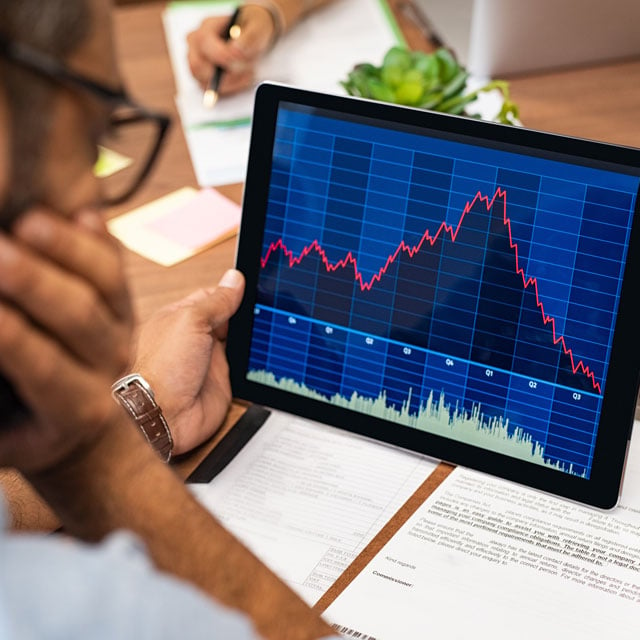Goldman, JPMorgan Say Markets Pricing in Higher Recession Odds

What You Need to Know
Equity and bond markets are assigning a 41% probability to a U.S. recession, up from 29% in April, according to Goldman.
Factors driving the models include market bets on a more aggressive pace of Fed rate cuts and a sharp repricing in Treasurys.
In the credit and mortgage markets, on the other hand, risk levels aren’t signaling much concern.
Financial markets are flashing a higher probability of an oncoming recession in the wake of the market maelstrom that briefly sparked fear across Wall Street last week.
It still remains an outside chance. But models from Goldman Sachs Group Inc. and JPMorgan Chase & Co. show that the market-implied odds of an economic downturn have risen materially, judging by signals in the U.S. bond market and to a lesser extent the performance of stocks that are acutely sensitive to the ebbs and flows of the business cycle.
Together equity and bond markets are assigning a 41% probability to a U.S. recession, up from 29% in April, according to Goldman, with the latest jump driven by the market wagering on a more aggressive pace of rate cuts from the Federal Reserve and the lagging performance of stocks that are acutely sensitive to the ebbs and flows of the business cycle. A similar model by JPMorgan calculates the odds to be 31%, jumping from 20% since the end of March, due to the sharp repricing in U.S. Treasurys.
JPMorgan strategist Nikolaos Panigirtzoglou said the recession risk in the bank’s model reflects the scale of rate cuts that have been priced in since the employment report showed a slowdown in job growth last month. He said the stock market signals just a one-in-five chance of a recession, albeit up from the zero that was priced in when equities were rallying to fresh records earlier this year.
“U.S. credit and equity markets look disconnected from U.S. rate markets,” he said. “If the next U.S. household survey for the month of August is similarly weak to the July one, reinforcing the recession thesis, equity and credit markets would need to weaken significantly to catch up with rate markets.”
The weaker-than-expected job-growth figures on Aug. 2 raised concerns of a slowdown by fanning fears the Fed has waited too long to start easing monetary policy. While the data showed weaker hiring, the monthly rate remained above 100,000 and various measures of the health of the economy aren’t warning of an imminent recession. U.S. small-business optimism, for example, recently increased to a more than two-year high in July.






